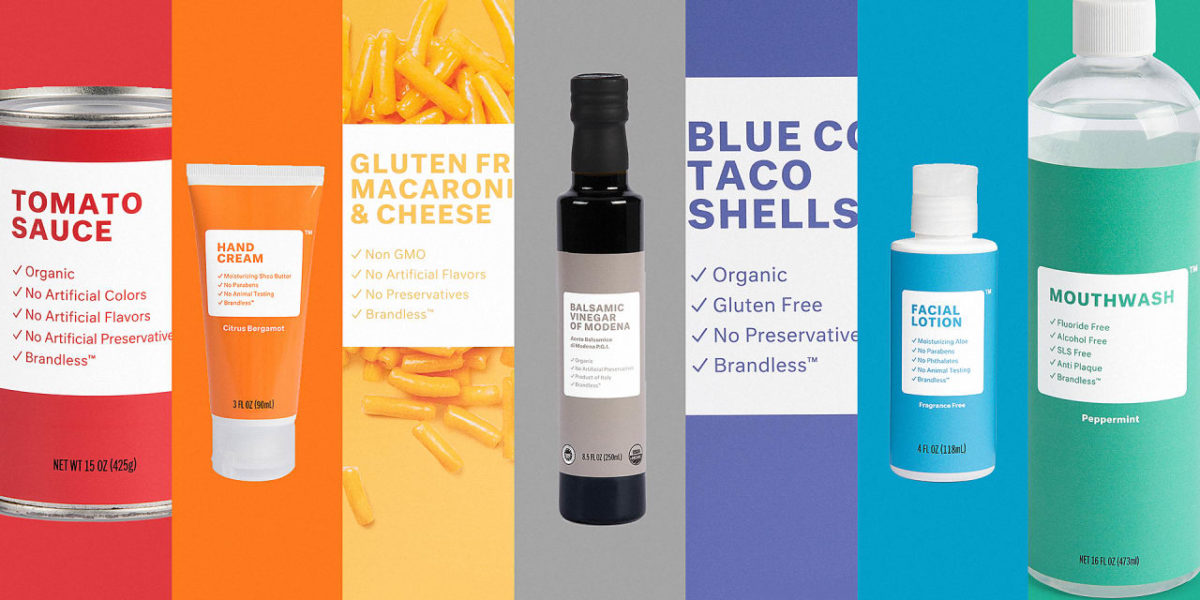Our very own Giles Lury’s newest book “Inspiring Innovation” has been published this month. To share the inspiration, we’ve been revisiting some of favourite innovations old & new from our Best Thing Since Sliced Bread blog series.
Generic gets a bad rap, but sometimes people just want food that does what it says on the tin. As food brands have moved towards being facets of an individual’s lifestyle and signallers of personality, it is easy to believe the only role for non-brand goods are to tide people over until they trade up to a higher tier within a product portfolio.
My favourite innovation from the past few months has been a company giving the generic a new lease of life. A range of generic goods that don’t have to internally fight against more glamorous premium brands. A range not tied to consumers perceptions of a supermarkets quality.
Brandless offers home essentials at a single price point of $3 per item. The brand doesn’t talk about a lifestyle, being part of a healthy breakfast, or tell people to ‘yurt it up’. All it does is sell peanut butter, and clearly and simply tells you what is in it (and what’s not), immediately cutting through in cluttered aisles across America. Plus they look great on a shelf, something that a supermarket’s own label would never be able to claim because generic was always designed to look offer ‘minimum viable appeal’ to encourage people to trade up.
Having recently closed a funding round worth 35 million, Brandless is proof that offering a product range that “does what it says on the tin” is a strong enough purpose in itself. More importantly, it shows and that innovative ideas don’t have to be new; they just have to be good ideas executed in the right context.
Key lesson: The re-emergence of generic goods is innovation in its own right. It teaches us that putting an old idea in a new context can be enough for success.


